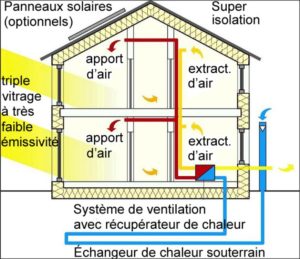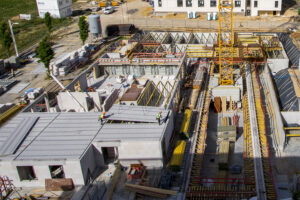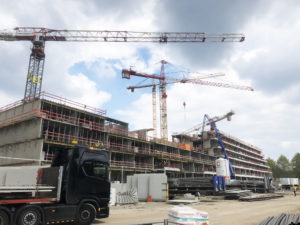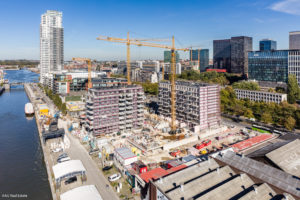The 5 keys to passive housing
- Home
- Latest news
- construction
- The 5 keys to passive housing
Go back to all the latest news
The 5 keys to passive housing
Did you know that it’s perfectly possible to live without heating, even in Belgium? You just need to live in a passive house. Here is how it works.
Modern, warm, comfortable, environmentally friendly, energy savings… Passive buildings are all the rage. The principle is simple: no need for heating, the heat generated inside and coming from the outside is enough to regulate the temperature.
This is the principle of a passive house: limit heat loss as much as possible, in such a way that an extremely small amount of energy is enough to heat it for the entire winter. Where does this energy come from? Essentially from the heat generated by the people living inside, electrical appliances and the sun’s rays coming through the windows. No need for radiators or central heating. In a traditional building, they actually only serve to compensate for heat loss.
- Aspect
The location of a passive house is optimised to take full advantage of the sun’s rays and protect it from the cold and damp. Large south-facing windows to take advantage of the calories offered by the sun, reduced openings on the north side and screens offered by outside vegetation.
- Insulation
Above all, a passive building is very well insulated to ensure that it is airtight. The walls, roofing and floors have reinforced insulation, ideally the windows have triple glazing and the frames are also efficient. Thermal bridges, these specific points in the structure which allow heat to escape, are also hunted down. Insulating from the outside often makes it possible to remove them.
- Ventilation
A passive building does still need to be ventilated, as the air must be renewed for the comfort and health of its residents. The solution is to install double-flow controlled mechanical ventilation. The incoming air is filtered – which improves its quality – and goes through a heat exchanger which provides it with the calories it is lacking if it’s too cold or removes them if it’s too hot. Stale or damp air is expelled outside, while its heat is recovered. Ambient air is thus constantly renewed and its temperature stabilised at around 20°C.
- Heating
It’s said that the heat generated by an iron is enough to heat a passive house for an entire winter… When it’s very cold, a little extra heating may still be useful, whether it’s a wood stove installed in the main living room or a little electric radiator that can be moved between rooms.
- Comfort
A passive house is even more pleasant to live in because it is heated evenly, the air you breathe inside it is of a very high quality and you’re protected from air currents. Not to mention the continuous visual comfort thanks to the light offered by the size and location of the windows. And the icing on the cake: it’s also very well insulated from the point of view of sound.
Did you know that our l’Alliance apartments don’t have any radiators?




